Browse using the new Vinous website now. Launch →
Printed by, and for the sole use of . All rights reserved © 2015 Vinous Media
Friuli’s 2023 Vintage: Great Wine in the Face of Great Sacrifice
BY ERIC GUIDO | OCTOBER 7, 2025
I’m typically a glass-half-full person, but I have found it sobering to relay the details of Italy’s 2023 vintage to our readers. From north to south, few areas in Italy made it through the year unscathed. Sacrifices made by the country's top winemakers often paid off, but at a significant cost: blood, sweat, tears, time, money and—for some organic producers—a rethinking of entire philosophies.

The town of Cormòns in the heart of Collio, with Mount Quarin in the background.
Friuli-Venezia Giulia endured extremely challenging conditions in 2023. Most of Italy suffered through a rainy spring and cool conditions that spurred outbreaks of downy mildew, but a series of intense hailstorms further worsened the situation in Friuli. The 2023 wines may not perfectly resemble many winemakers’ typical styles, yet they excel with unique attributes never seen before. In some instances, winemakers could not produce single-vineyard wines or top selections, and in nearly all cases, production levels suffered drastically. However, through it all, perseverance paid off.
First, Some Housekeeping
In past articles, I've written about Friuli’s lack of regional identity, considerable consumer confusion, quality disparity and disorganized outward communication. These issues continue to plague the region, but it is worth sifting through the sea of anonymous wines to uncover Friuli’s many hidden gems. Friuli is a treasure trove of elite winemakers at the top of their game. These growers are inspired, open-minded, insightful and willing to experiment, while always remaining laser-focused on quality. They represent a vast stylistic range that encompasses clean and precise wines, traditional styles that border on rustic, indigenous and international varieties, well-crafted skin-contact wines and everything in between.

Kristian Keber is challenging preconceptions about Collio Bianco.
What changes to the current methodologies would serve to benefit Friuli? Firstly, producers should shift their focus away from the litany of monovarietal wines that litter the market and focus on what they truly do best. Why make 14 wines when you know you are the master of only two or three varieties? Mario Zanusso of I Clivi explained, "The problem with Friuli winemakers is that they have so many varieties within their vineyards, and they choose to treat them all the same."
Secondly, the Collio Bianco category could be better defined by limiting the permitted varieties to only those that communicate a regional style, such as Friulano, Malvasia Istriana and Ribolla Gialla. While many producers do well with Chardonnay and Pinot Grigio in Friuli, the inclusion of these varieties removes a sense of regional flavor from the Collio Bianco blend. This isn’t a new concept—winemakers like Kristian Keber champion the traditional blend, and others like Tamara Podversic of Damijan are also exploring the idea. Both happen to be among Friuli’s best producers.
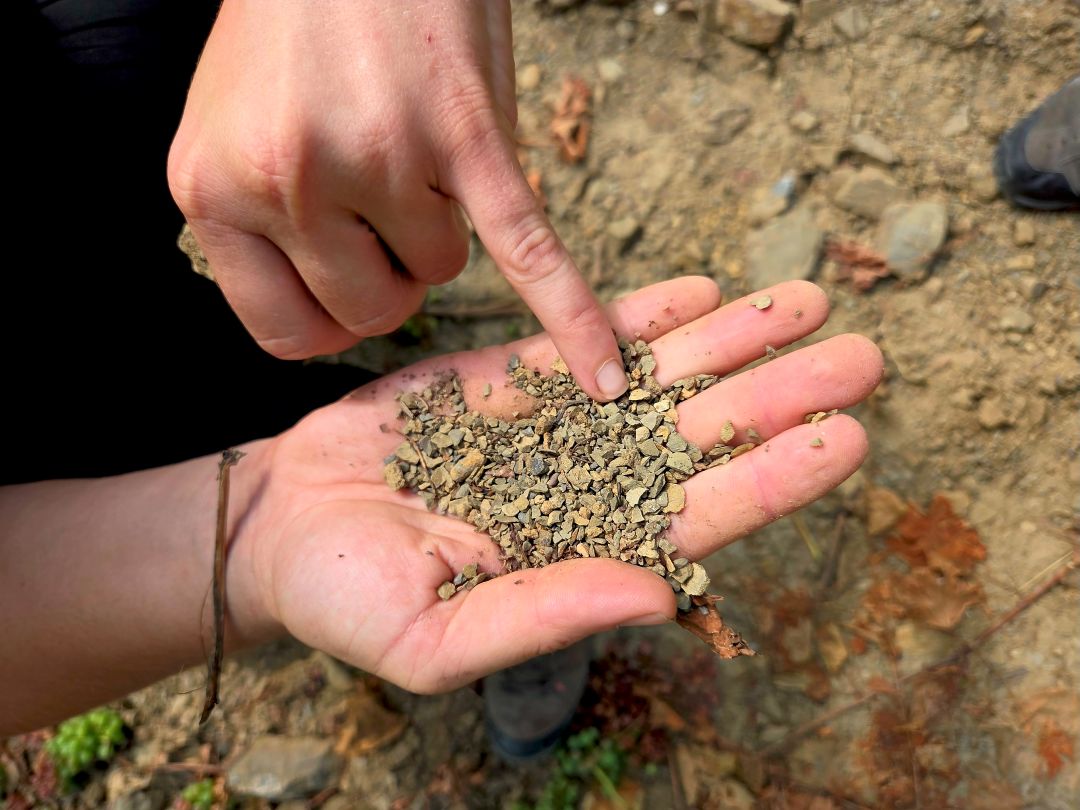
Classic Ponca soils consist of stony, well-draining sandstone and marl.
The Collio/Brda Conundrum
The line between Collio in Italy and Brda in Slovenia continues to blur, such that I included several Slovenian wines and producers in this article. I plan to revisit Slovenia in detail again in the future, but for now, these notes from Brda provide a perfect example of how meaningless this border is for most winemakers. Oftentimes, while I’m interviewing a producer in Collio and standing in their vineyards in Italy, we’ll walk just across a road or a few meters into another vineyard they own on the Slovenian side of the border. This situation is readily accepted in Collio, which includes the town of Oslavia. Carso also has a similar dynamic with the border it shares with Kras.
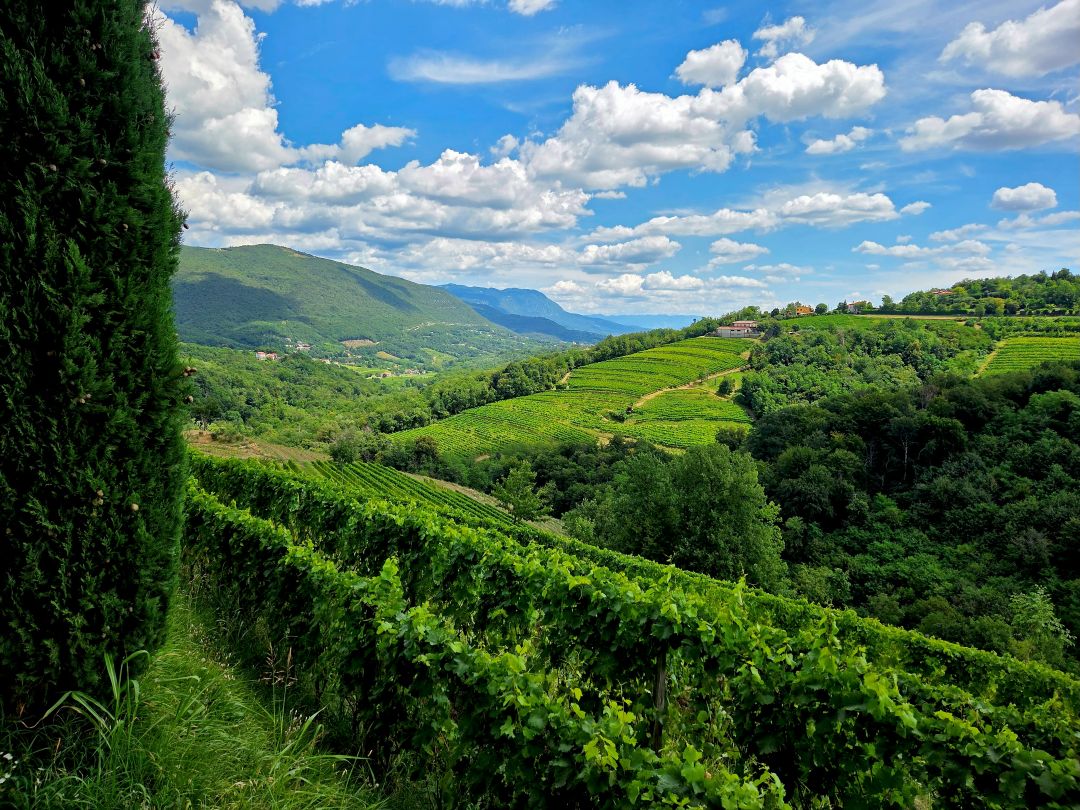
The hillside terrain of Slovenia.
Granted, a Collio Bianco or Collio DOC wine cannot be made from Slovenian fruit. For example, a Slovenian producer like Marjan Simčič, with ten hectares of vineyards in Italy, classifies their wine as Goriška Brda but labels others that are sourced entirely from Italy as Collio DOC. Kristian Keber is another example. He has a family property in Collio and another in Brda. Keber crafts his Collio Bianco from fruit on the Italian side of the border under the family name Edi Keber, but also bottles his Brda blend (the same blend of grapes but done with skin contact) from fruit on the Slovenian side and labels it as Goriška Brda.

Mateja Gravner in Friuli’s Oslavia region.
The Brda district in Slovenia is a natural extension of Italy’s Collio region, sharing the same hilly topography (Collio is derived from collina, the Italian word for “hill”) and Flysch soil (Opoka in Slovenian, Ponca in Italian). From a bird's-eye view, Collio washes into Slovenia and continues until the foothills of the Julian Alps. I hope the current collaborations between the two regions will lead to a future that benefits both sides of the border and allows more leniency for Italian producers.
Carso: A Different World
Of all the days I spend in Italy each year, my favorite is the day I visit Carso. In this region, skin-contact wine is not just a trend—it's a heritage. While other parts of Friuli were inspired to follow in Josko Gravner's footsteps after his stylistic shift in the mid-1990s, Carso's tradition with macerated whites goes back much further. That's not to say that Gravner didn't resurrect the style’s popularity in Carso, primarily through disciples like Paolo Vodopivec, but it was the region’s diverse varieties and harsh climate that kept the practice relevant.
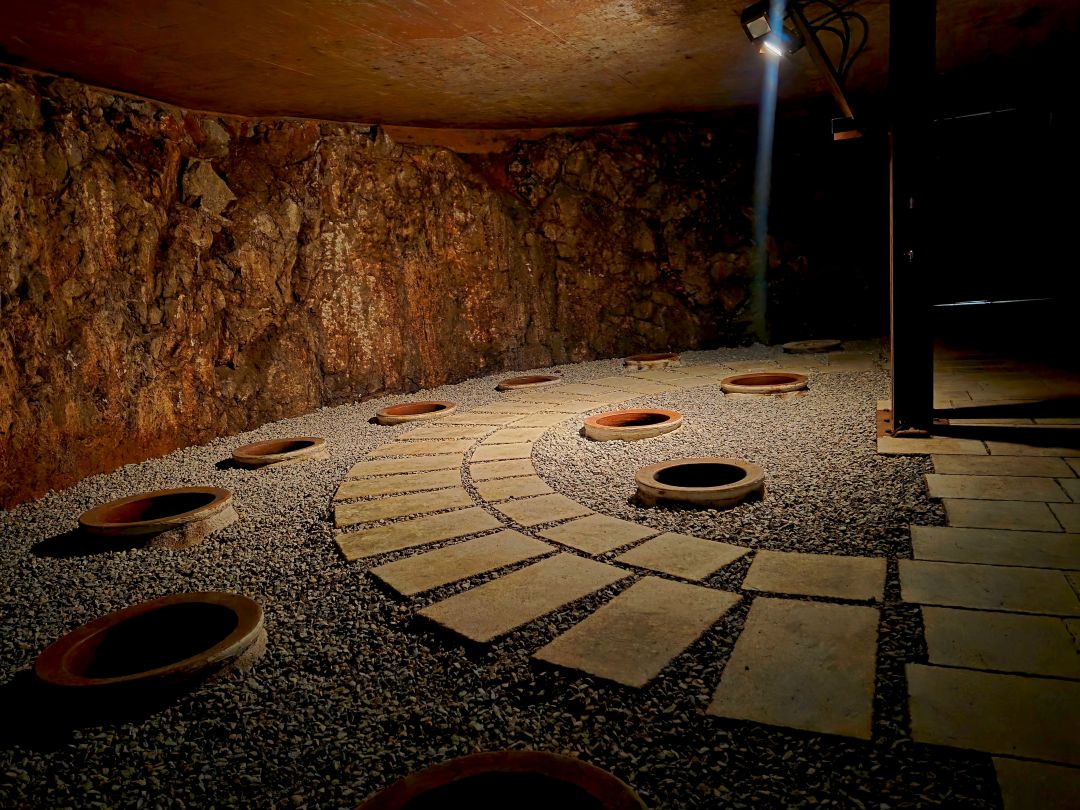
Vodopivec’s amphora chamber seems more like a monastery than a winery.
To be clear, there’s a big difference between skin-contact wines done right, as in Carso and Oslavia, and the ones that turned "orange wine" into a divisive category. The presence of volatile acidity, oxidation and Brettanomyces, coupled with low to no sulfur additions, can quickly turn a skin-contact wine from stunning to hideous. However, I invite anyone who claims that this style of wine can't express terroir or vintage character to taste the wines of Skerk, Skerlj, Vodopivec, Castelvecchio and Zidarich, as well as those from Čotar across the border in Kras. I’ve witnessed the potential of these wines firsthand, not just in new releases but in wines with significant maturity.
Friuli’s Red Wine Renaissance
For years, you could count the top red wines from Friuli on one hand: Miani or Radikon Merlot, Ronchi di Cialla Schioppettino di Cialla, Borgo del Tiglio Rosso della Centa, La Castellada Rosso and Moschioni Schioppettino.

Friuli is about more than just white wine. These indigenous reds are impressive.
That list has since grown exponentially. In some cases, I find myself preferring a producer’s red wines to their whites. In terms of native varieties, Refosco dal Peduncolo Rosso and Schioppettino continue to gain momentum. These are often made in a more immediate, fruit-forward style meant to move quickly through the market, even if locals don’t appreciate the wines as much as younger drinkers seem to. That said, the old-school category is far from dead, especially as traditional producers like Ronchi di Cialla slowly release from their library of back vintages. Pignolo is another indigenous variety making a comeback as winemakers learn how to tame its aggressive tannins.
Merlot has maintained more relevance than Cabernets in Friuli. The ever-expanding list of world-class efforts proves that the region excels with this variety. Miani, Ronco Severo, Ronco del Gnemiz, Vie di Romans, Ronco del Gelso, Vigna Traverso and Sant'Elena are all top performers. Most recently, I've even encountered promising examples of Pinot Noir. The days of pigeonholing Friuli as a white wine region are over.
Not Your Typical 2023 Vintage Report
As mentioned above, the 2023 vintage in Friuli gave winemakers a run for their money. While most of Italy suffered rainy and overcast conditions throughout the spring that led to outbreaks of downy mildew, producers in Friuli will tell you that vine disease was the least of their worries. For one thing, the cool conditions didn’t end in the spring, instead lasting well past flowering and into the summer months. Winemakers feared a delayed harvest while dealing with fungal diseases that reduced yields. Some varieties ripened while others appeared completely stagnant.
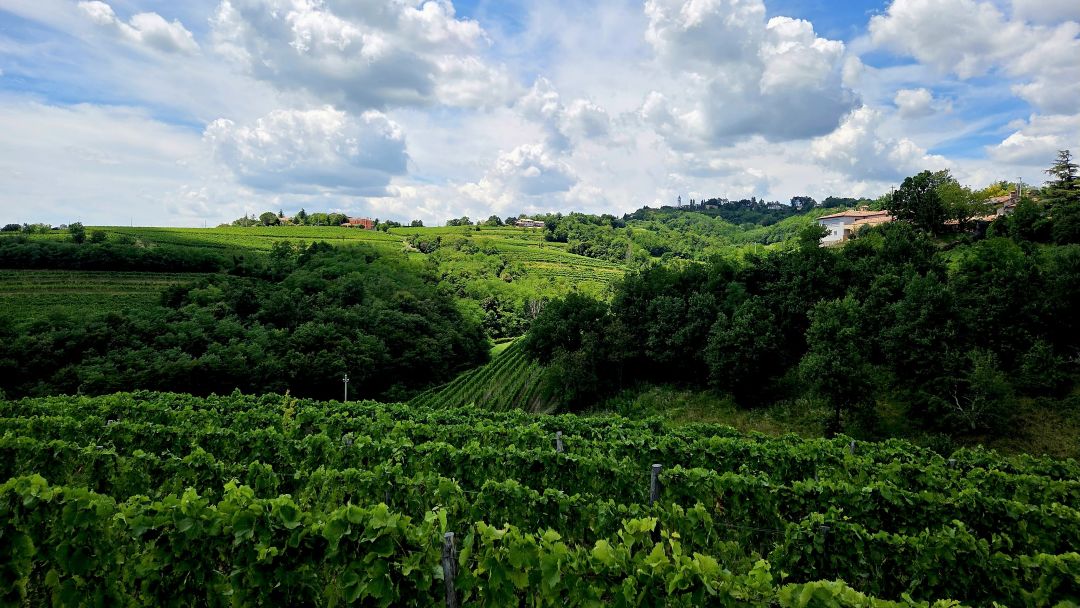
Ribolla Gialla vineyards, with the Radikon winery in the distance.
The situation was already bad, but it got even worse as a series of intense hailstorms battered the region from July 18 to 25. The worst of these storms, on July 24 and 25, hit the area with record-breaking hail and decimated large sections of vineyards. The damage was severe, and some producers lost their entire production. The plains of Grave suffered a near-total loss, while the hills of the Colli Orientali (including Buttrio) and Collio were less affected. Gianfranco Gallo, of Vie di Romans in the Isonzo Valley, explained that two different storms within two hours destroyed the canopies in their Ciampagnis Vieris vineyard.
A warm spell through August did little to get the vintage on track, as most winemakers reported harvesting seven to ten days later than usual. Luckily, conditions improved leading up to harvest, turning warm, sunny and windy, but much of the damage was irreversible at that point. The combination of built-up moisture, warm weather, delayed harvest and damaged berries created a serious risk of botrytis. Winemaker Mattia Manferrari of Borgo del Tiglio explained, "We picked the Friulano on the verge of when the skins got brown and rotten, but we had to wait until the very last moment. We harvested the vineyards three separate times to achieve healthy ripeness.” Friulano is especially susceptible to botrytis. Christian Patat of Ronco del Gnemiz commented, “Yields were down by 35-40% with Friulano most affected. Working the musts was very hard. No matter how much you sort and perform triage in the vineyard, you can’t get to all the affected berries.” Red varieties were another casualty of the season, and many winemakers chose not to bottle any of their red wines.
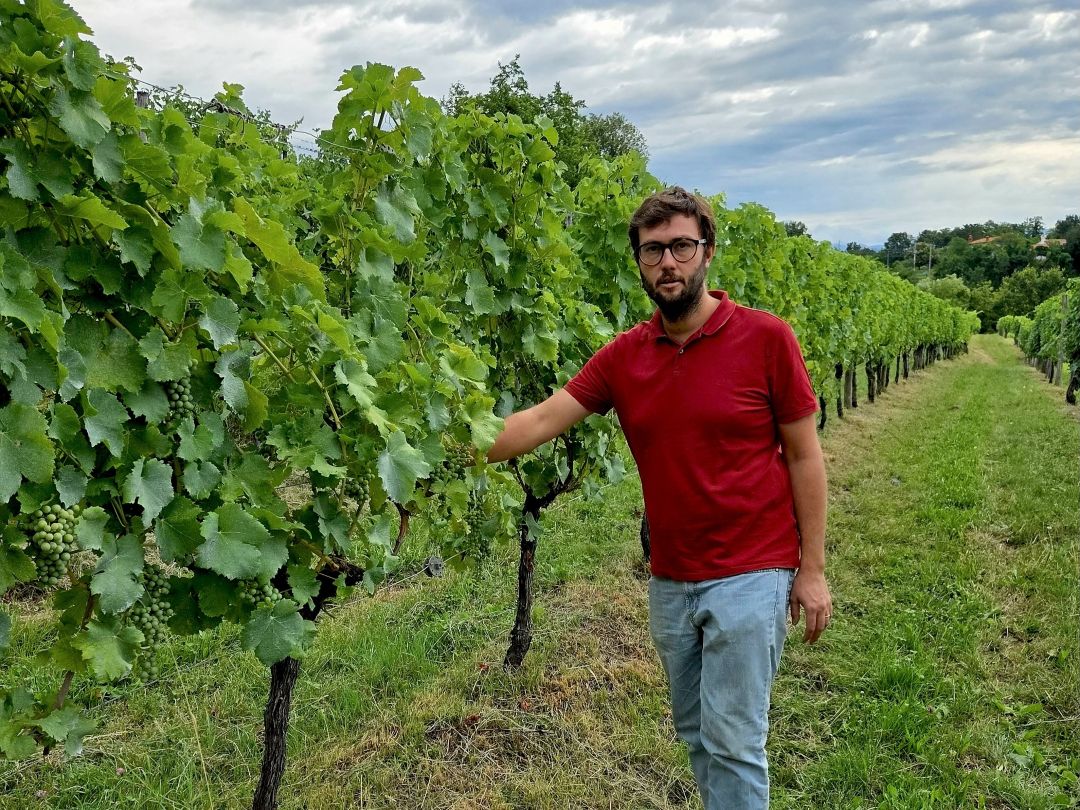
Mattia Manferrari of Borgo del Tiglio in the Ruttars vineyard, the source for the Studio di Bianco.
So, where does that leave the 2023s?
The wines vary in quality across the board. In many cases, winemakers did a terrific job of salvaging their best fruit and creating wines that impress with finesse, minerality and exotic profiles. In some cases, the wines are absolutely brilliant, wonderfully unique and exciting. In others, they are a total let-down. The 2023s have lower acidity and higher pHs across the board. One standout characteristic of the 2023s is a distinct, green streak, almost like a minty freshness. Undoubtedly, Friulano was most affected by the growing season, and many of these wines had botrytis-infected berries in the fermentations. This can lend character if the rot was healthy or create a ticking time bomb in the bottle if it wasn’t. How the wines will age is anyone's guess, but buyers should be selective.
I tasted the wines in this report in Friuli-Venezia Giulia in July 2025.
© 2025, Vinous. No portion of this article may be copied, shared or redistributed without prior consent from Vinous. Doing so is not only a violation of our copyright but also threatens the survival of independent wine criticism.
You Might Also Enjoy
Friuli-Venezia Giulia: Both Sides of the Spectrum, Eric Guido, April 2024
Friuli Venezia-Giulia: In Search of an Identity, Laura Bruno, October 2024
Pride and Tradition: The Friulian Way, Eric Guido, April 2023
Veneto: The Land of Opportunity, Eric Guido, March 2023
Friuli-Venezia Giulia: Just Try to Keep Up, Eric Guido, April 2022
Show all the wines (sorted by score)
- Attems
- Borgo delle Oche
- Borgo del Tiglio
- Cantarutti
- Castelvecchio
- Clic
- Conte Brandolini d'Adda
- Čotar
- Cusumano
- Dalia Maris
- Damijan Podversic
- Domaine Ciringa
- Dri Giovanni Il Roncat
- Drius
- Due del Monte
- Edi Kante
- Edi Keber
- Ermacora
- Fantinel - Santa Caterina
- Fantinel - Tenuta Sant'Helena
- Fiegl
- Garagisti Anonimi Friulani
- Gigante
- Gradis'Ciutta
- Gravner
- Grillo Iole
- I Clivi
- Jacuss
- Jermann
- Kristian Keber
- La Ponca
- La Roncaia
- La Viarte
- Le Monde
- Lis Neris
- Livio Felluga
- Marco Felluga
- Marco Sara
- Marina Danieli
- Marjan Simčič
- Meroi
- Miani
- Mitja Sirk
- Muzic
- Nero Magis
- Nicola Manferrari
- Nuvolaio
- Perusini
- Pighin
- Plessiva Isidoro Polencic
- Primosic
- Raccaro
- Radikon
- Rodaro
- Ronchi di Cialla
- Ronco dei Tassi
- Ronco del Gelso
- Ronco del Gnemiz
- Ronco Severo
- Ronc Platât
- Russiz Superiore
- Sant'Elena
- Schiopetto
- Scubla Roberto
- Skerk
- Skerlj
- Specogna
- Sturm
- Tenuta Borgo Conventi
- Tenuta Luisa
- Tercic
- Terlato Vineyards
- Toros Franco
- Torre Rosazza
- Tunella
- Valentino Butussi
- Venica
- Via Alpini
- Vie di Romans
- Vigna del Lauro
- Vigna Traverso
- Villa Dugo
- Vodopivec
- Volpe Pasini
- Zidarich
- Zuani
